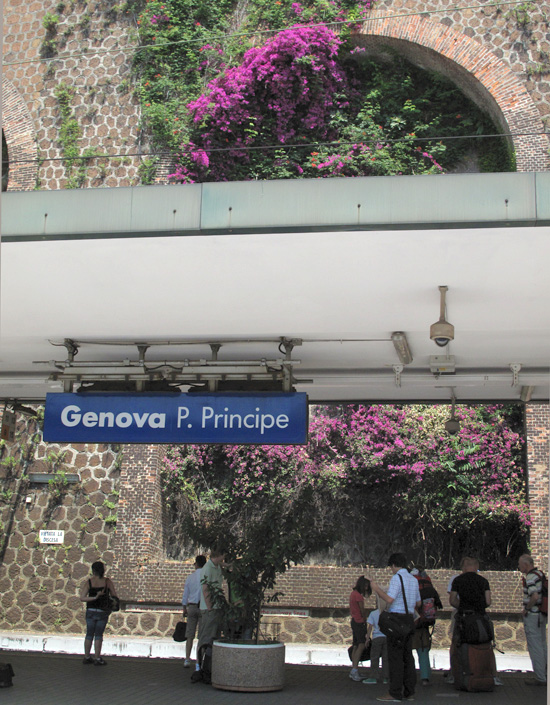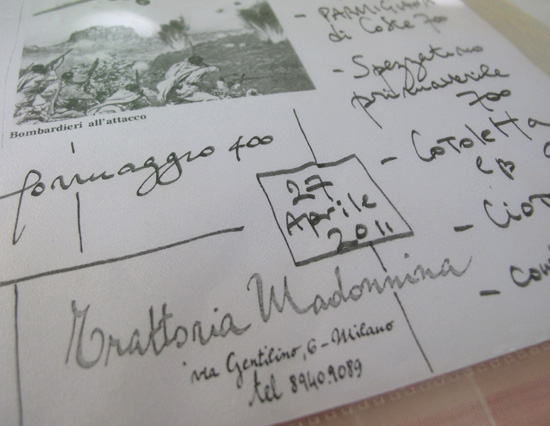
by Maureen | Apr 29, 2011 | Featured Articles, Incredible Locations, Introspection, Journal, Milano, Photos
Friday, April 29. The Milanese are still wearing their winter jeans, puff jackets and scarves. I’m wearing black linen capris and sleeveless blouses. I arrived in Milano Wednesday at 9:00 a.m., to a morning warmer than Seattle… yet I’m glad to have brought a little summer jacket.
Robin-like birds started singing early this morning. By the time I looked at the clock, it was 5:00 and they had already roused a chorus. I slipped back into sleep, and when I awoke, it was then the doves I heard, cooing in the courtyard trees.
The sky is overcast. There’s a bit of a breeze, and we had both sprinkles and sunshine by day’s end. The church bells just started chiming. It’s a quarter-til-6:00 in the evening. Why aren’t they waiting ’til the hour?
– – – – –
On Wednesday, the short train ride from the airport brought me to Cadorna Station in central Milano. I caught a cab to the apartment I’ve rented for this week, in the hip-and-artsy Navigli district, just blocks away from my old apartment and one of the grocery stores I always used to shop at.
Late morning, drowsy from the long travel and a little hungry, I went across the street to Trattoria Madonnina with its city-wide reputation… for coffee and lunch served by an unhappy waitress. I sat on the courtyard-side, jasmine-covered patio, with red-checked tablecloths and red, plastic chairs. (The WC is an old-style pit toilet with white, ridged ceramic foot pads for accurate positioning.) The morning was slow and relaxed with a cool, mid-spring sun and Milano’s classic hazy-blue sky. Neighborhood locals passed through the courtyard with their big, round “ciaos”.

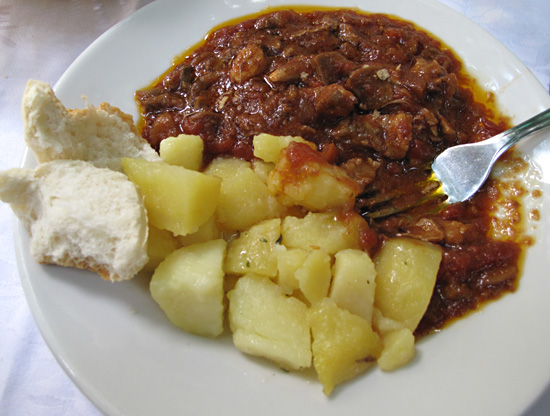
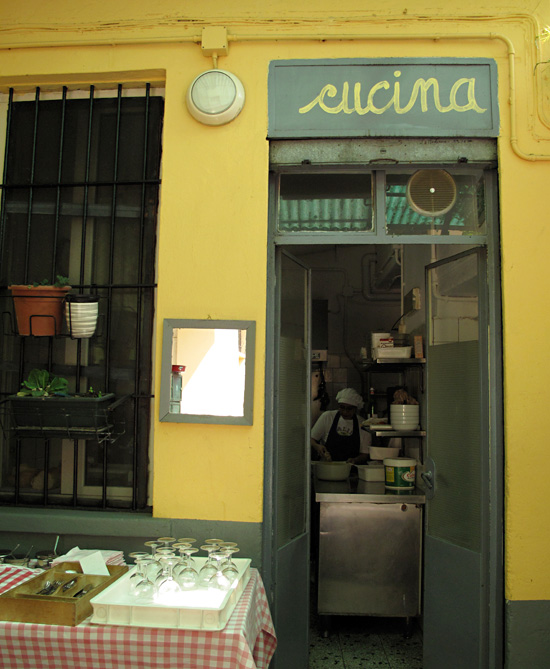
I stopped in to the grocery to see my friend, Justine, cutting prosciutto in the meat department. She’s the meat cutter at the store and has the most beautiful smile. It touched my heart that her face lit up to see me and we gave each other an excited, european, two-cheeked kiss and chatted between customers.
It feels as if it’s only been 2 weeks since I was last here. As if I was back in Seattle just to check on a few things and see family, friends and clients. Actually, 9 months have passed since I packed up and left Milano, but it feels like I’ve come home, as I walk these familiar streets and hear the city’s sounds of sirens and courtyard conversations, soccer cheers and scooter accelerations.
In planning these two months, I gave myself the luxury of a fairly unplanned first week here in Milano. I haven’t even told all my friends that I’m here yet, because I haven’t wanted this week to be a full flurry of gatherings. I’ve taken my naps and slept as needed to get over the late-nights’ crush to leave Seattle, the long travels and resulting jet lag. I’ve focussed on getting systems up and running. I reactivated my Italian cell phone with its rechargeable SIM card, unlocked my ancient (1st generation) iPhone (thanks to Luigi) and transferred the SIM card from one phone to the other. I was allowed use of the wifi at the Design School and have spent hours online, sitting amidst design students in the computer lab while I booked air and hotels for Sicily and Puglia for the coming two weeks.
Connectivity-hooked that I am, with no wifi in this apartment, and inconvenienced by only being online when the computer lab is open, I bought a “chiavetta” – little key – from TIM, one of the Italian carriers and the supplier of my cell phone SIM card service. Very patient Valentina at the TIM store on Corso San Gottardo explained my options and then waded through setup with me. I can now use the key modem independent of wifi availability throughout all of Italy (though it won’t work on my iPad because of device power issues).
Logistics. Though vastly less disruptive to my “life system” to come abroad for “just” 2 months rather than packing up and moving here, it’s still a big effort and taxing. How often do I figure on doing this? Once… twice a year? Would two weeks satisfy me? Will I always want a month or two or more? And to what end? Am I naive in feeling I have some sort of tie to Italy and her people, the friends I’ve made here? Am I holding a glamorized, fantasy of living partly in Italy? And where does that come from?
It’s Friday evening and there’s chatter in the courtyard, an enclosed canyon of a space between several of this big city’s 5-story apartment buildings.
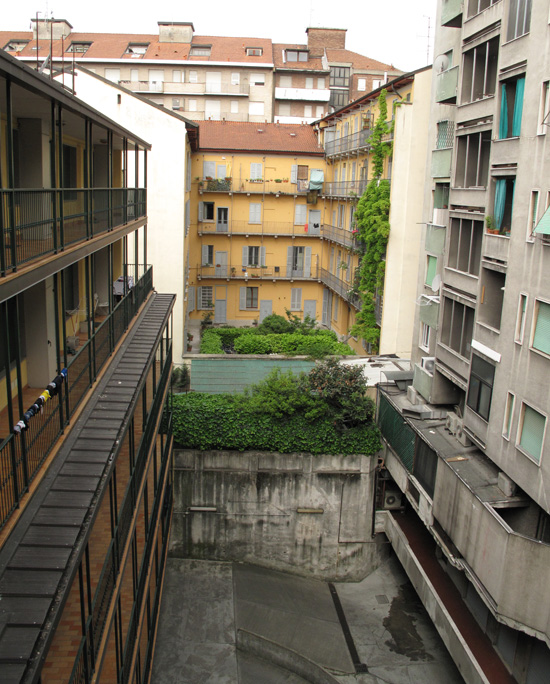
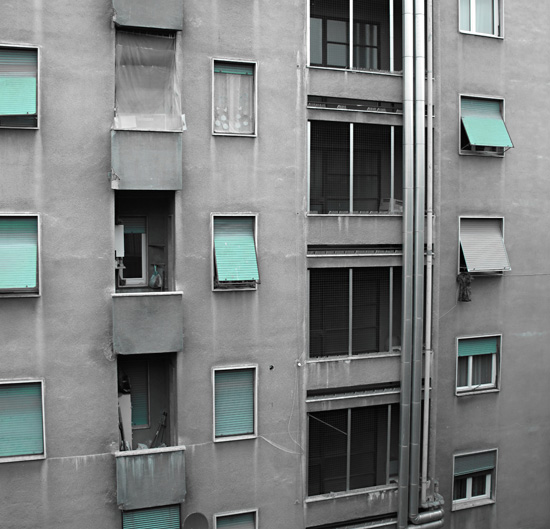
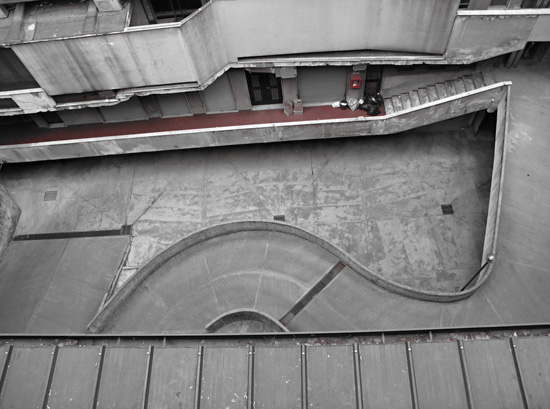
Still moving slowly, I’m not compelled to go out tonight. Rather, I’ll make myself a salad of fresh greens, Sicilian tomatoes, long-missed bresaola, scamorza affumicata, some oil and vinegar. Maybe this weekend I’ll head down the bike path on an already-borrowed bike for some fresh ricotta cheese, and then later meet up with a girlfriend to check out the latest art museum show.
Here just two days so far, I’ve shopped for olive oil and intimates, cured meats and internet keys. At a quarter-til-eight in the evening, the doves are cooing again.
I’m back in Milano.
Ciao!

by Maureen | Dec 8, 2010 | Discoveries, Featured Articles, Food!, Incredible Locations, Journal, Meals, Photos, Seattle, Shopping & Markets
Saturday. Past 10:00 in the evening and the house smells good of octopus cooking since 9:26. A few garlic cloves, a dozen peppercorns, a tablespoon of salt and maybe a gallon of water in a pot with an octopus that stretches out a couple of feet.
How DOES one cook an octopus? Yearning for my favorite dish at the Carlotta Cafe in Milano, the Piovra con Patate (Octopus with Potatoes. Octopus is also called “polpo“.), I set off on my first octopus-cooking experience. I’ve been watching videos on YouTube to get a sense of technique and the general consensus is, like squid, either cook it really short, or cook it really long. In between would be like eating rubber bands.
I trundled into holiday crowds at the Pike Place Market today to my favorite fishmonger, Pure Food Fish. (Ask for Rich and tell him I sent you.) For $3.99 per pound, I went home with a small octopus and excitement to try my hand at the simple, yet delicious, Sicilian dish. (When I got home and unwrapped my catch, I found a tiny little octopus in the bundle.)
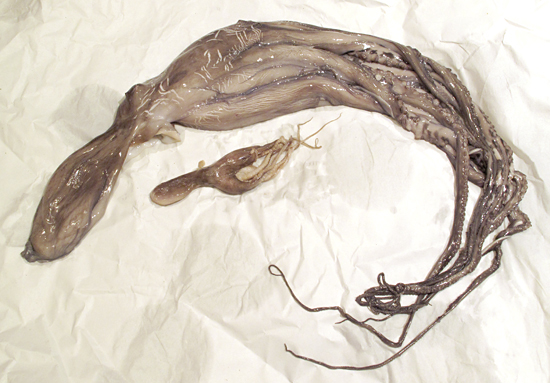
While at the Market, I bought Yukon Gold Potatoes and Italian Parsley at a vegetable stall. I had a wonderful conversation with Theresa, the seller, and we exchanged some contact information and wild stories about my bold decision to pick up and move to Italy for a year.
Next, I went to Seattle’s Italian food fixture, DeLaurenti, and bought a few other ingredients. I needed taggiasche olives, which they didn’t have except in a jar, so I bought the celina olives instead. I stepped upstairs and sampled vibrant, green olive oils at their tasting bar and selected the Partanna Sicilian oil for its full flavor. While I was at the store, I couldn’t help but buy two fresh mozzarella balls… (even though they’re from Wisconsin.)
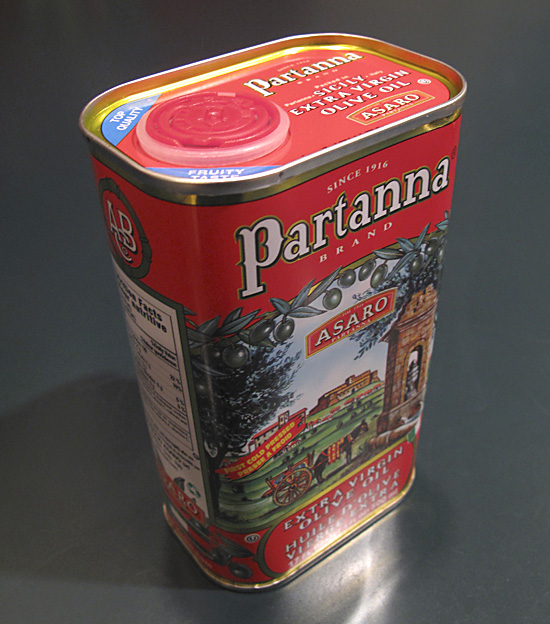
It’s now 10:37 and the octopus has cooked for a little over an hour. I put the timer on for another 15 minutes. Better tender than not. What I’m thinking is that I’ll pull it out of the cook pot and let it cool. Tomorrow, I’ll cook the potatoes, and will cut up the octopus parts and maybe sauté them a bit. (Yes? No?) Then I’ll toss everything together and hope that it looks and tastes something like what I had at Ninni and Agnese’s fabulous little café, named after their daughter, Carlotta.
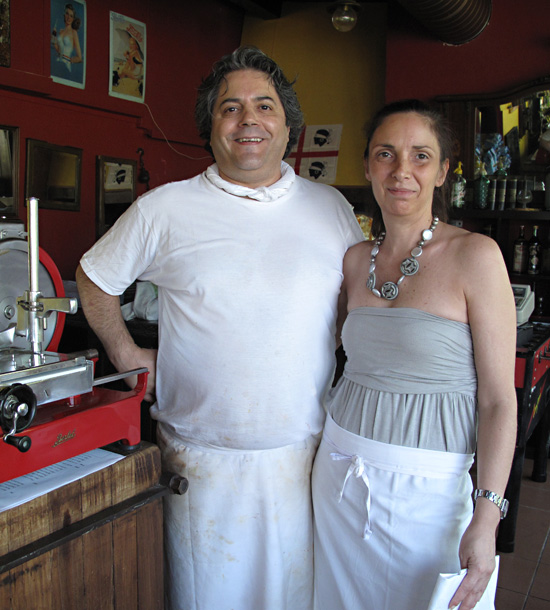
Ninni and Agnese had offered to let me come into their kitchen to learn how to cook this, my favorite meal. Friday, the day before I left Milano to return to the U.S., I hired a taxi to take me to the café. (It’s not very walkable.) When I arrived on Friday at lunchtime, they were closed! I was so disappointed, and rode the same taxi home. I never got my chance for a lesson from them but will always remember their incredible meal.
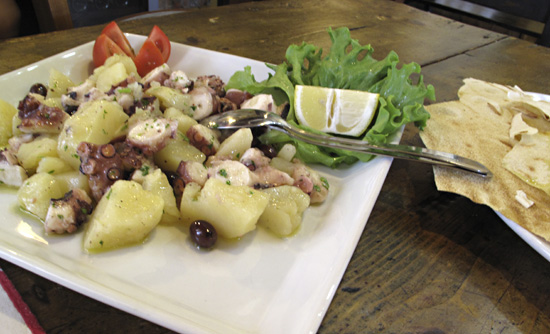
11:06 p.m. The octopus is out of the pot after about an hour and 15 minutes. It cooked down to not much, really. I think I could select a bigger octopus next time, or one-per-person. It’s tender and perhaps needs only one hour. The outer skin is loose and slippery, so I’ve fingered most of it away.
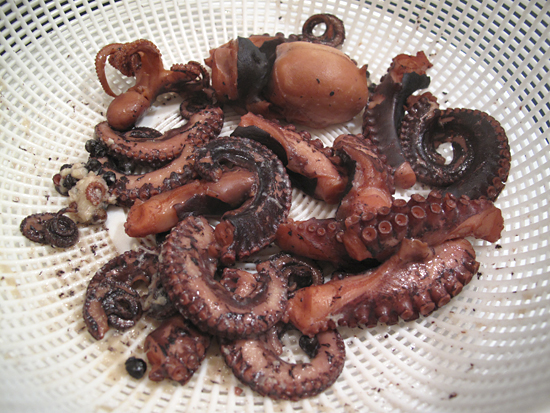
Guess what’s for dinner tomorrow? I’ll cook my potatoes, lightly warm my octopus in a sauté pan, drizzle my oil and some fresh-squeezed lemon, and add my olives and parsley. A little sea salt and some pepper. Done! Maybe it’ll approximate Ninni and Agnese’s dish, and if I close my eyes I’ll think I’m at their cafe alongside the canal, sipping a Sicilian wine and whiling away the time.
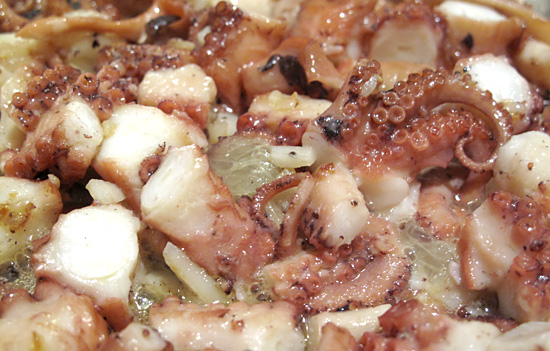
Wednesday morning. Post-Octopus…twice! I prepped the octopus as I described, for my dinner late on Sunday. A girlfriend stopped by just in time and we both relished it.
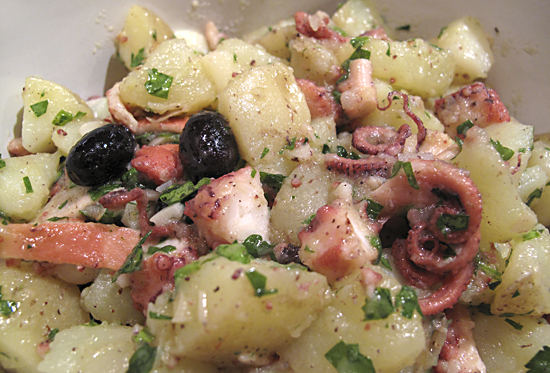
My hunch-of-a-method approximated that of the Carlotta Café enough so that I decided to cook it for two friends on Monday night, too. I went back to the Pike Place Market, got two octopus from Rich and started all over again. This time I threw more veggies into the cooking broth and cooked the octopus whole. It ended as a deep aubergine color, but the skin was more troublesome this time. I may need to do more research, but my friends devoured it, nonetheless. Piovra con Patate may be my new “potluck dish”.
Mark Bittman, “The Minimalist” chef for the New York Times, wrote a concise, yet thorough, ditty on buying and cooking octopus, “Octopus Demystified”.
And here are guide on Cooking Small Octopi and Cooking Large Octopi including cooking charts with times and results.
Here’s a recipe, in Italian: Insalata Tiepida di Polpo e Patate
or, roughly translated into English: Warm Salad of Octopus and Potatoes
A little side note:
One friend was puzzled by the long, pale gray, glistening octopus that I bought (seen above) and the deeply-colored, ruddy-purple, curled, firm octopus seen below. It’s “before and after”! Before cooking, the octopus is limp and pale. One web site recommended holding it by the head and dipping the tentacles a few times into the boiling water so that they curl uniformly, then dropping the whole animal into the pot to cook. Almost immediately, the skin color darkens, and by the end of cooking, (in this case about an hour), the octopus has taken on this dark coloration. Some enjoy eating the skin, some do not. Depending on the length of time in the boiling pot, the dark skin can be brushed or scrubbed off, ideally leaving white cylinders of meat. Personally, I like to have the suction cups remain because they are the clue to the meat on the plate! But the skin at the top of the tentacles and around the body/head is thick and viscous and I haven’t developed that preference yet.
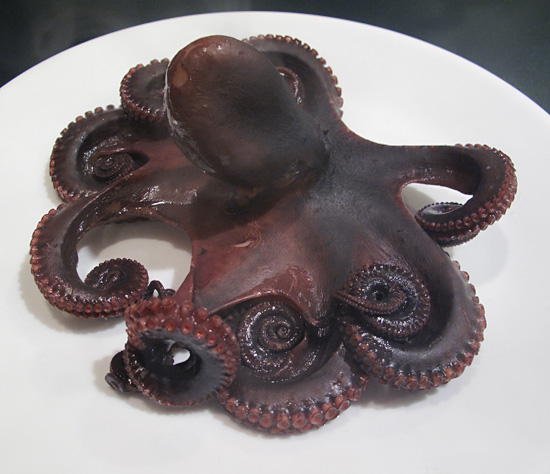

by Maureen | Nov 28, 2010 | Canals, Featured Articles, Incredible Locations, Journal, Photos
One year ago, late November, I was riding my beloved bike route along the Naviglio Pavese, one of the several canals radiating from the center of Milano. In the near-14-months that I rode this paved path, I couldn’t guess how many times I covered part of these 33 kilometers between Milano and Pavia, to the south.
Some days I went only as far as the roundabout joining two highways near Binasco, and turned back, not having the guts that day to do that dangerous circle on two wheels. Other days I veered off west into the farm land, and wound the one-lane roads amidst the rice paddies and corn fields on my way to buy fresh ricotta cheese at Cascina Femegro. There were times I talked to and raced with the lycra-clad jock cyclists on their training rides and I surprised them by keeping up with their pace.
In the course of my long year, I witnessed the full cycle of seasons along the canal. I rode in the humid heat of summer under a blazing sky, and continued riding in the cold, hazy gray of the long, Milanese winter. I was intrigued by the dull hues and disrepair of the backside facades overlooking the canal. Along this route, I saw the frostburnt remnants of summer gardens, moss and algae, stucco and tile begging for repair and persimmons left to hang.
The canalside is more often left untended; it is the non-public face of the home or business, unlike the streetside front that presents a more polished view, (akin to a beautiful woman ironing only the front of her blouse). But there’s something very direct and appealing about the canalside facade, even quaint, and certainly without pretense. It called for a sleepy, early-winter portrait from the water’s edge.
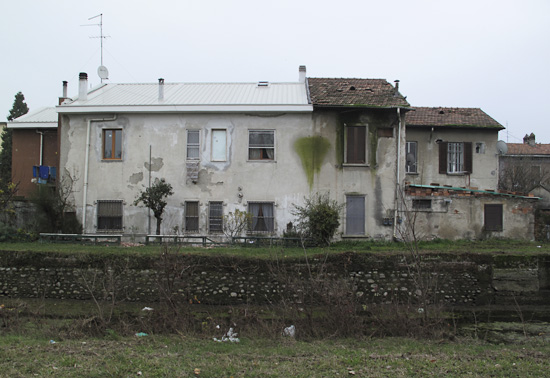
.
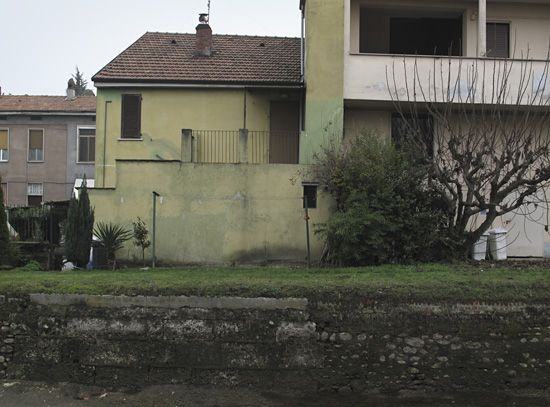
.
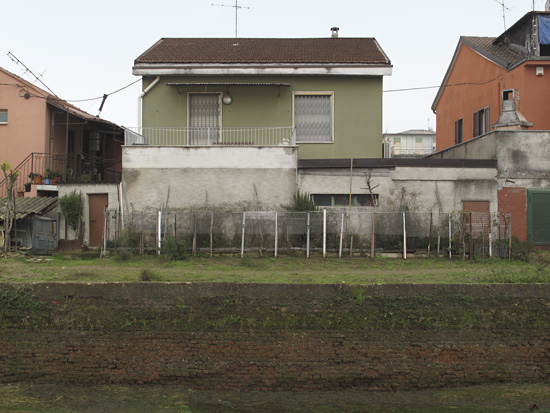
.
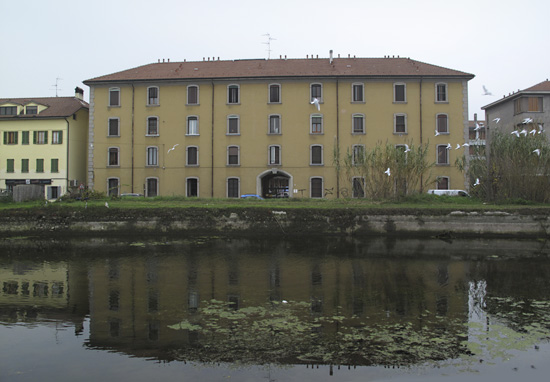
.
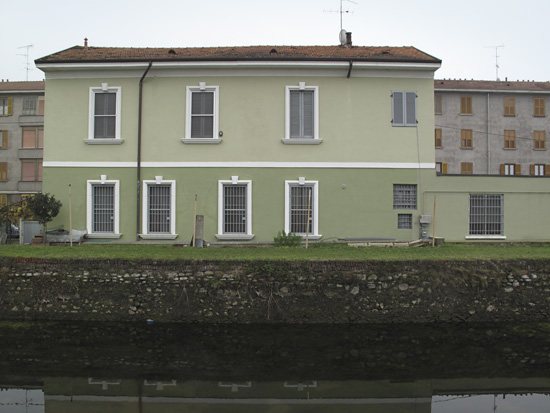
.
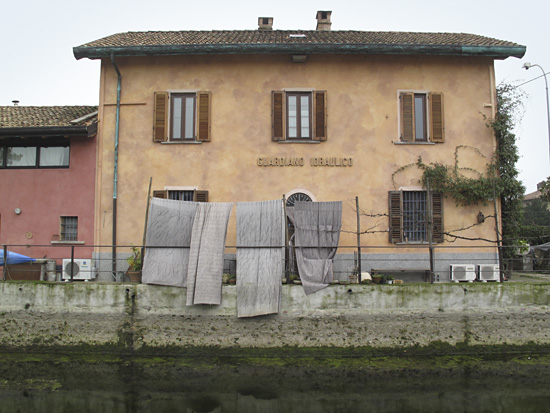
.
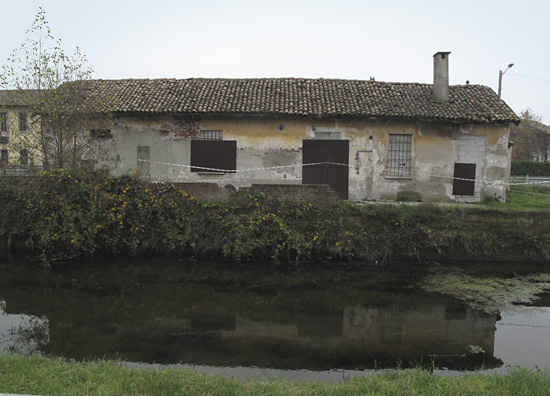
.
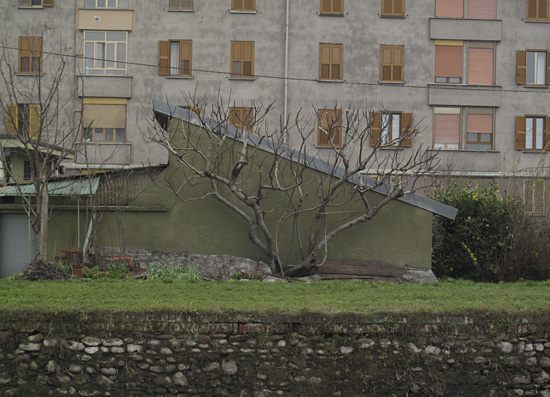
.
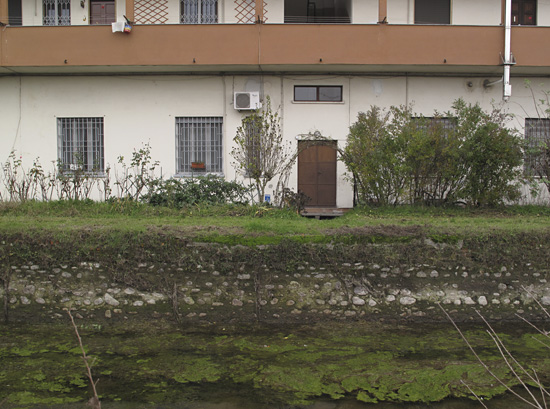
.
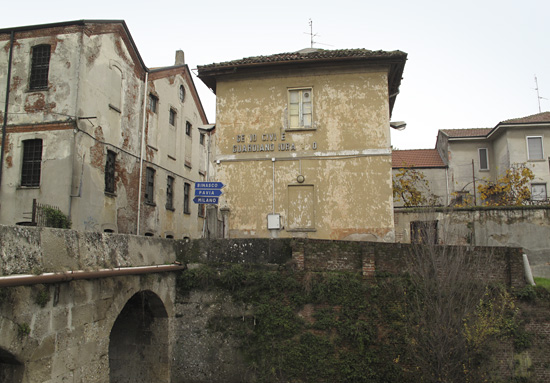
.
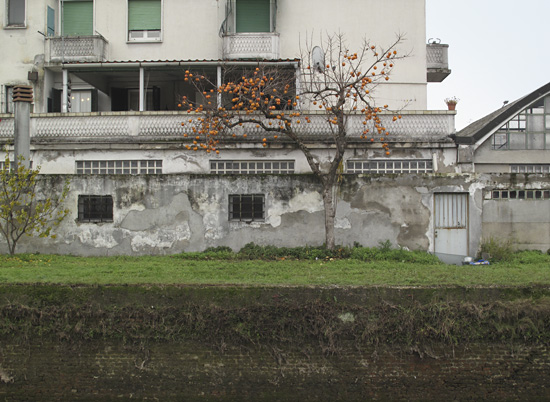
.
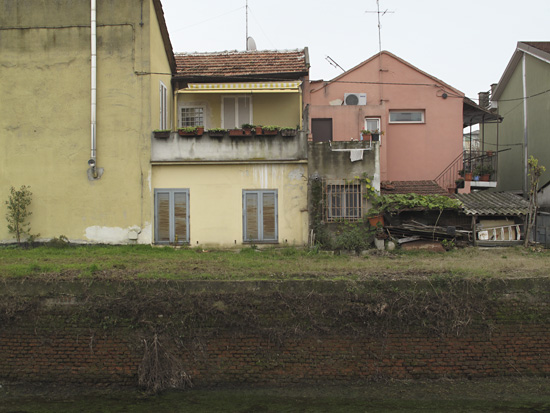
.
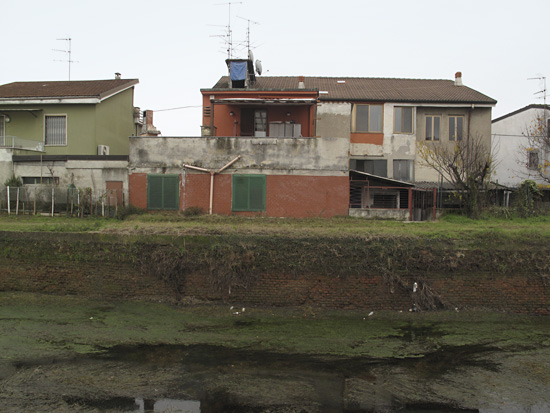
.
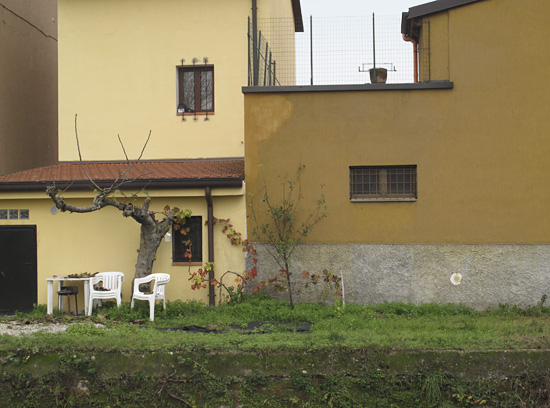
Among the many, here are a few other stories I’ve written about the canal:
Canalside Afternoon
Rapeseed & Red Poppies
Kitty Fix on a Ricotta Day
The Rolling “Ciao”
History Buff on Wheels
Fish on a Sunny Day
The Canal’s End of Summer
Head Wind
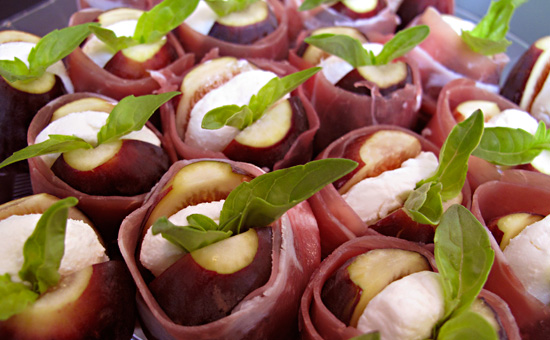
by Maureen | Oct 4, 2010 | Featured Articles, Food!, Incredible Locations, Journal, Meals, Photos, Quips, Sanremo, Seattle
The inspiration of living in Italy will likely continue on for a very long time. I recently split fresh figs and stuffed them with a wedge of goat cheese. I wound them with jackets of prosciutto slices and garnished them with young leaves of basil. The plate of appetizers disappeared in 30 seconds. Late-comers were out of luck.

When in Milano in late July, riding my bike alongside the canal, I passed many fig trees heavy with ripening fruit. I kept watching the progress, wondering if the figs would be ready before my departure on July 31. They weren’t. But at half-ripe, they were already twice the size of the the California figs I recently bought here.

Eating figs here in Seattle reminds me of eating figs for lunch with friends in Sanremo along the Italian Riviera in early July.
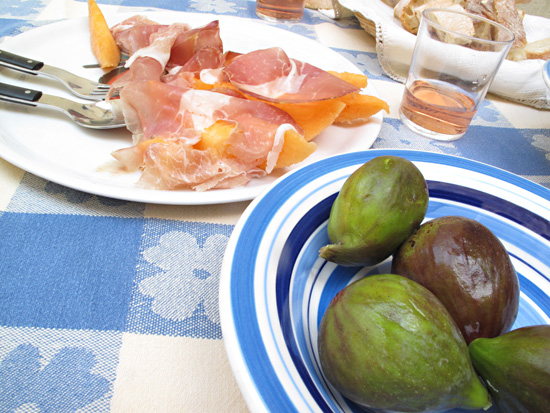

by Maureen | Jul 15, 2010 | Discoveries, Featured Articles, Food!, Journal, Meals, People, Photos
Octopus as tender as a dream, served warm and simply, with potatoes, olives and olive oil. Fish and pasta prepared and presented with an expert hand. Warm-hearted hosts, all family, welcome their guests into an easy, comfortable dining room in their restaurant alongside the Naviglio Pavese canal: Carlotta Café Bar & Restaurant. If you want to eat at all in Milano, EAT HERE.
During my year here, I have eaten at the Carlotta Café 5 times, and each time I have swooned and savored my meal. The fish could not be fresher. The light seasonings could not be more perfected. The preparation of every dish has never been pretentiously grand; it is simple, pure and complete. It’s no wonder I keep going back.
Carlotta Café owners, Ninni and Agnese, have had the restaurant for 13 years.

Siblings, Carlotta (after whom the restaurant is named) and Erik, work with their Mother in serving the café patrons. Erik is as attentive and welcoming as one could wish for when out for a nice meal.
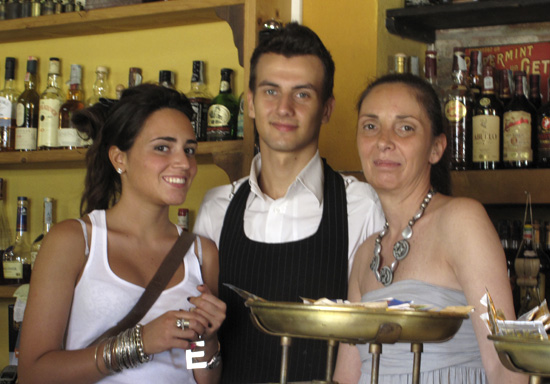
Here are a few of the dishes I’ve enjoyed in my times at the restaurant.
(The photos were taken in varying lighting conditions, evening and daytime.)
Pane Carasau, also called “Paper Music”, is a wispy-thin cracker served hot, generously drizzled with a flavorful olive oil and brightened with salt. This bread starts the meal and wakes up the mouth.
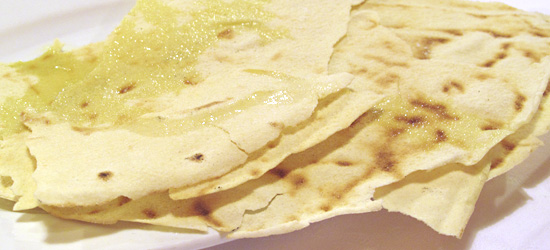
The dish that keeps bringing me back for more: Piovra con Patate – Octopus with Potatoes.
I can’t even descibe how delicious it is.

Gamberi Rossi Crudi della Mediterranea – Mediterranean Red Shrimp, served raw – are a delicacy and a gift to the palate.
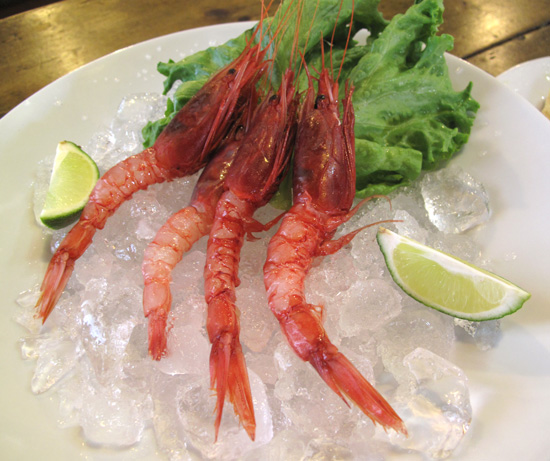
This shrimp will be splashed with lime and relished.
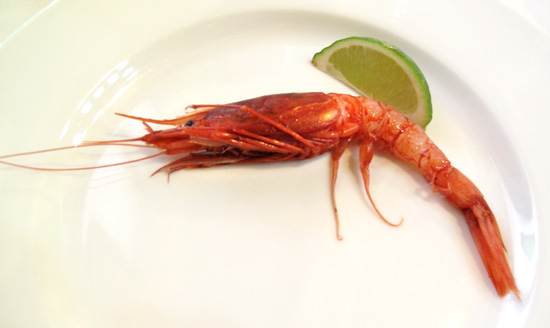
Spaghetti con Vongole e Bottarga – Spaghetti with clams and grated, dried fish roe.
Bottarga is a southern Italian gourmet specialty.
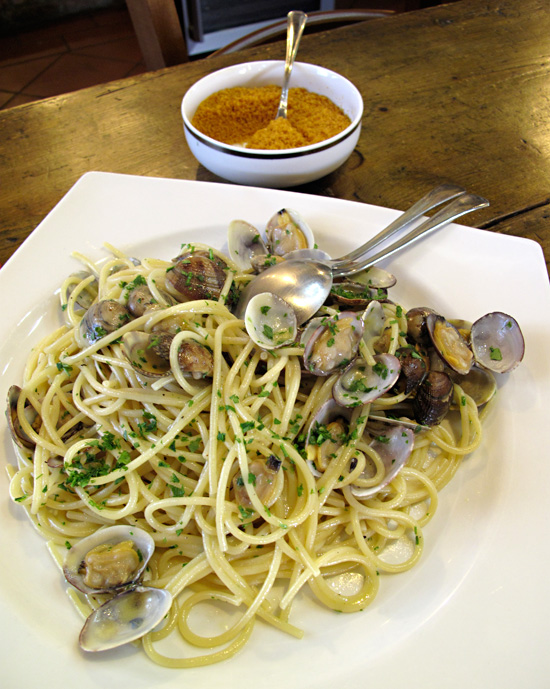
Branzino Vernaccia con Olive – Baked seabass with olives and olive oil.
Look at how beautiful those filets are. Ninni knows how to handle fish!
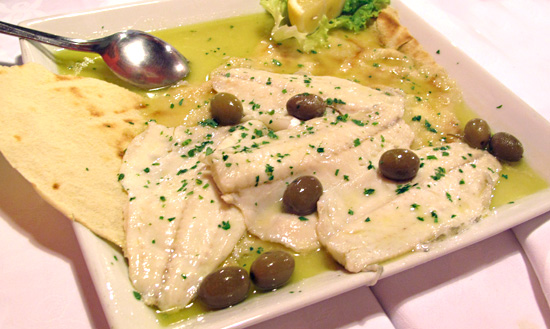
Carpaccio di Spada – Thinly sliced, raw swordfish, served with rucola – arugula – and tomato.
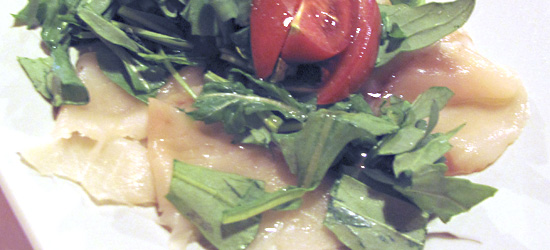
Paccheri all’Isolana – Paccheri pasta with tuna, basil and tomato.
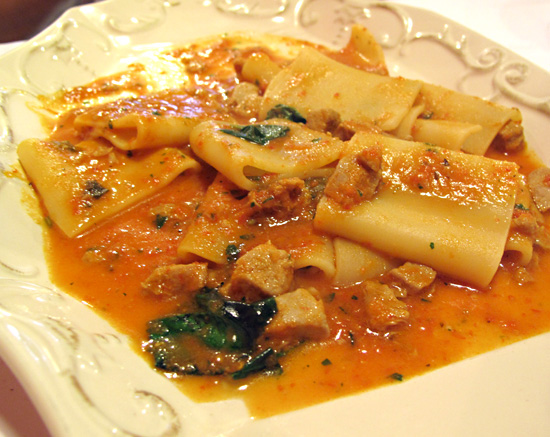
Gnocchi con Speck e Rucola – Potato Gnocchi with lightly smoked speck (cured meat somewhat similar to prosciutto), arugula and a creamy sauce.
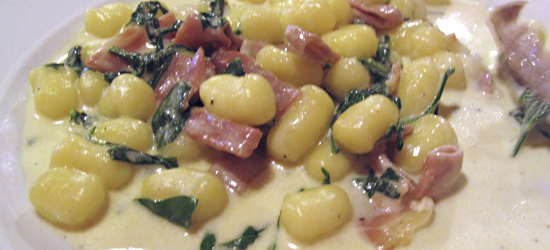
The Carlotta Café offers a full bar, wine list and caffé. Order an ice-cold bottle of Mirto, a Sardegnan specialty from myrtle leaves and berries, as a digestif to sip after your meal.
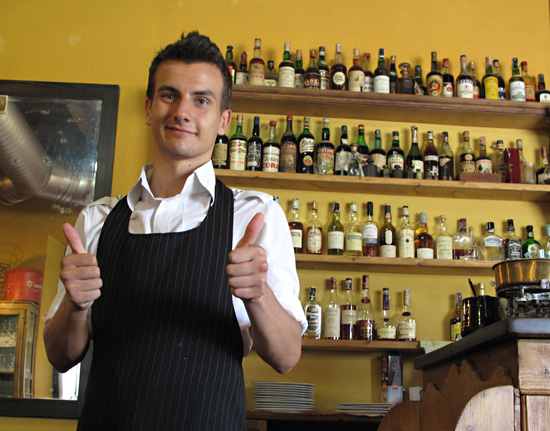
The Red Room is the quiet, more intimate room set off from the bar and main dining area.
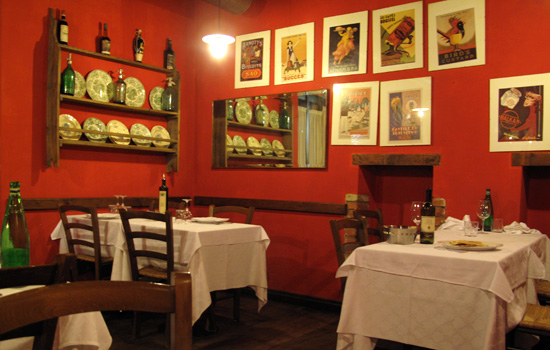
There’s also a north-facing Terrazo Room with it’s pleasant light.
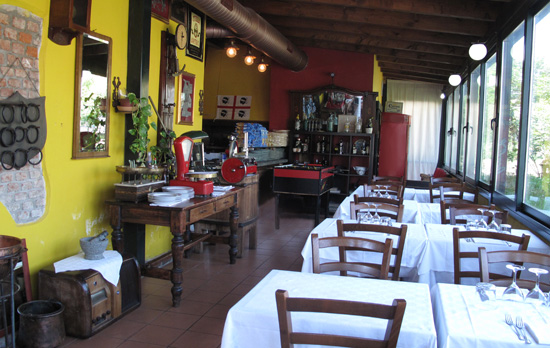
The café is not in the central hub-bub of town, and unlikely to be found by tourists. It’s not close to a subway stop and, for me without a car or scooter, it would be a long walk on a hot day. So I gladly take a quick cab ride to the restaurant and it is oh-so worth it.
Ninni and Agnese offer a “Cena a Base di Pesce“, dinner based on fish, at an incredibly reasonable price. Make it simple for yourself: order this special dinner and a nice bottle of wine then sit back and enjoy the steady stream of expertly prepared foods that arrive at your table. You will go home happily satisfied. And you, too, will dream about the octopus. (Tell them “Maureen” sent you.)
(Check with them on their current pricing, since it may change.)
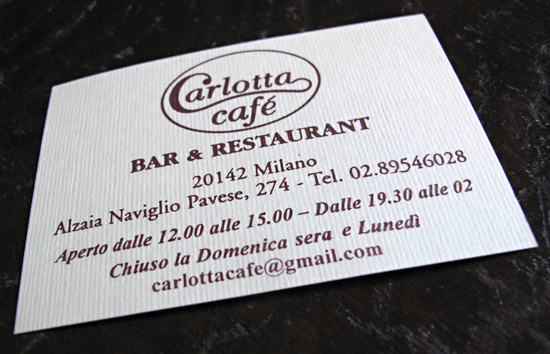
Carlotta Café Bar & Restaurant
Alzaia Naviglio Pavese, 274
20142 Milano, Italia
TEL: 02.89546028
E-MAIL: carlottacafe@gmail.com
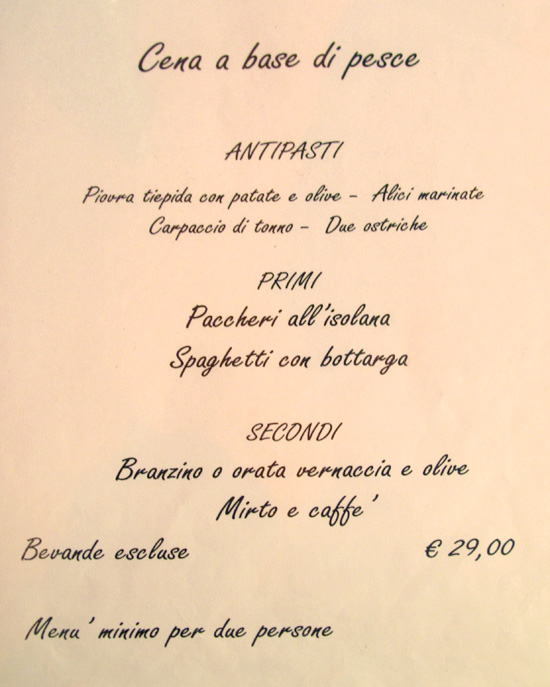
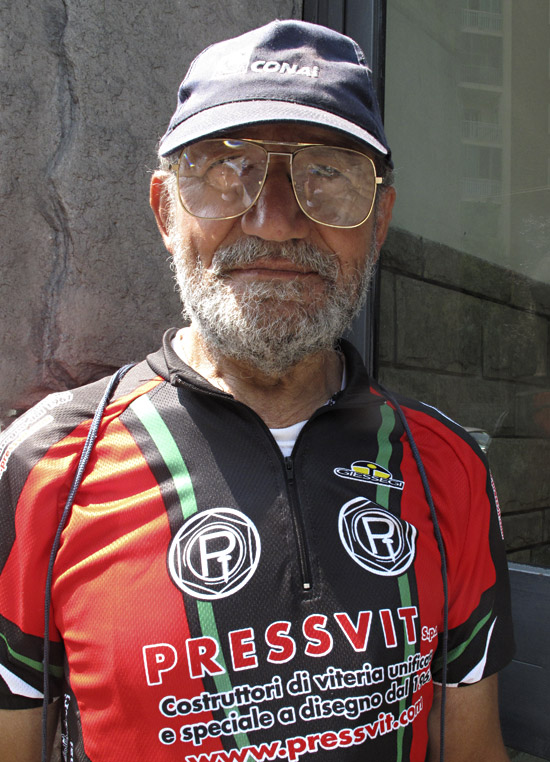
by Maureen | Jul 14, 2010 | Featured Articles, Journal, People, Photo of the Day, Photos
My “History Buff on Wheels“, Angelo, went rolling past me along the canal this morning. In a cycling daze and not recognizing him, I nodded and said the usual “ciao” as one cyclist to another. Mere moments later, he pulled up on my left, took my pace, greeted me and commented that it had been a long time since we had seen each other.
“Angelo! Ciao!”
What a great surprise to see him.
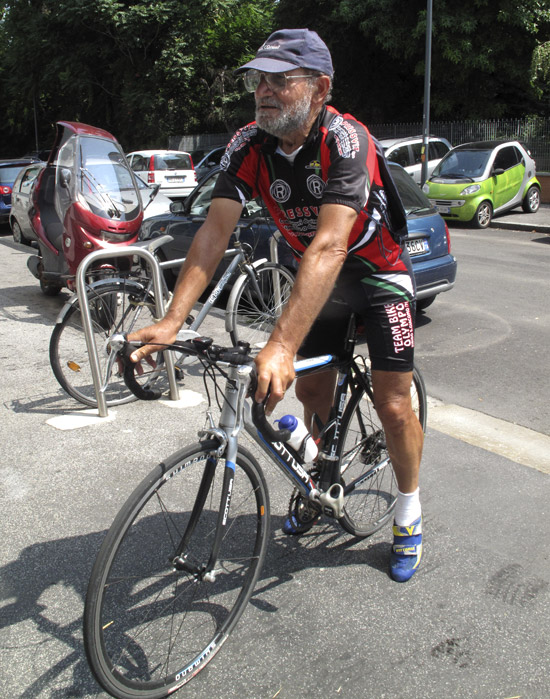
It had been January 11th, a very cold day, when we had ended up riding for 3 hours together, and all that time he had given me an historic commentary on Italy, Europe, the wars and politicians. It was Angelo that showed me the little back roads through the farmland that I have come to cherish so much. It was Angelo that first took me to Cascina Femegro, where I now go for the fresh ricotta cheese I savor.
Today, we rode for a half an hour together, all the way back to my place. We stood out on the walk under the scorching sun, talking about more history and geography, language and dialects. What a pleasure. We said a warm goodbye, but hoped to see each other another day on the bike path before I go.
“Ciao, Angelo!”

by Maureen | Jul 11, 2010 | Introspection, Journal, Quips
This is not a scholarly blog with a foundation in formal Art or European History. I’m the first to admit my ignorance in those realms. And on the web, one can find formal information and imagery on just about any topic. I have no desire to regurgitate what’s readily available out there, although I do provide links now and then to informative sites.
Rather, this is a collection of sometimes-knee-jerk, sometimes-thoughtful observations and responses to having plopped myself down in Milano for a year. I write about the jaw-droppingly beautiful, the quirky and questionable, the forefront, the frustrating and the fulfilling.
Living here is “the stuff of dreams”, but it is not “glamorous” as so many seem to believe. It is daily life in a place where they speak a different language and do things differently, all against a backdrop that sometimes takes my breath away from either beauty or cigarette smoke.
I write about ants in my kitchen and hardwater in my pipes. About an old lady in her pajamas on New Year’s Day, and an old man gathering fire wood along the canal. There’ve been stories about feeding fresh ricotta cheese to farm cats, buying old linens at the flea market, and eating pureéd rabbit livers and raw meat.
This blog is simply about what catches my eye, my mind and my heart. It is increasingly populated with stories of the people that have stepped into my days. I’ve filled my mind with enough imagery to inspire me for a lifetime.
This is no movie set. The Lombardia sun is usually obscured by haze. The winter was interminably gray. There is “dog do” on the sidewalks and no one else to handle the details for me. But the struggles have been authentic. The food is remarkably unlike an Italian restaurant menu in the U.S. The people have been slowly responsive. And I’ve started to “talk with my hands”, especially when in an animated conversation in Italian with a friend.
Having been here now for over a year, and facing an imminent departure and return to The States, I feel mixed and wistful… and deeply full.
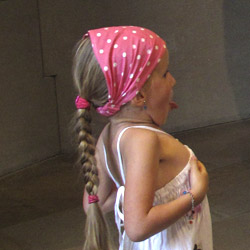
by Maureen | Jul 11, 2010 | Discoveries, Featured Articles, Journal, People, Photo of the Day, Photos, Quips
The little girl was unrestrained and so pleased with herself. She and I both saw the humor of her Minnie Mouse joining Michelangelo’s unfinished Rondanini Pietá. As I think about it further, I wonder which creator, Michelangelo or Disney, has had greater cultural influence? (Many would be aghast at my putting those two in the same sentence, but it’s a legitimate question.)
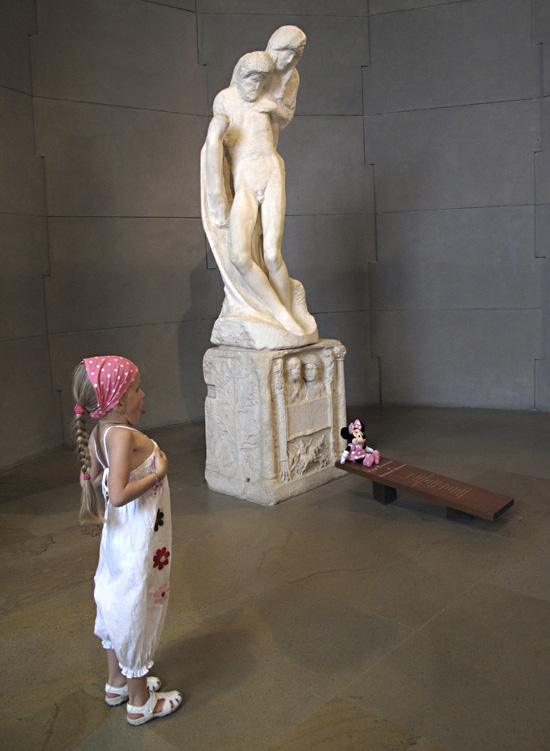
Though I’ve been in and around the Castello Sforzesco, one of the jewels of Milano, a number of times while here, I had not gone in to view the art and history exhibitions there. Before my departure, I wanted to “at least” see the Rondanini. Michelangelo had worked on this Pietá for many years and, they say, even up to a few days before his death in 1564. Here’s a video about the restoration done on the Rondanini Pietá (in Italian, but visually interesting, nonetheless, for those that don’t understand it).
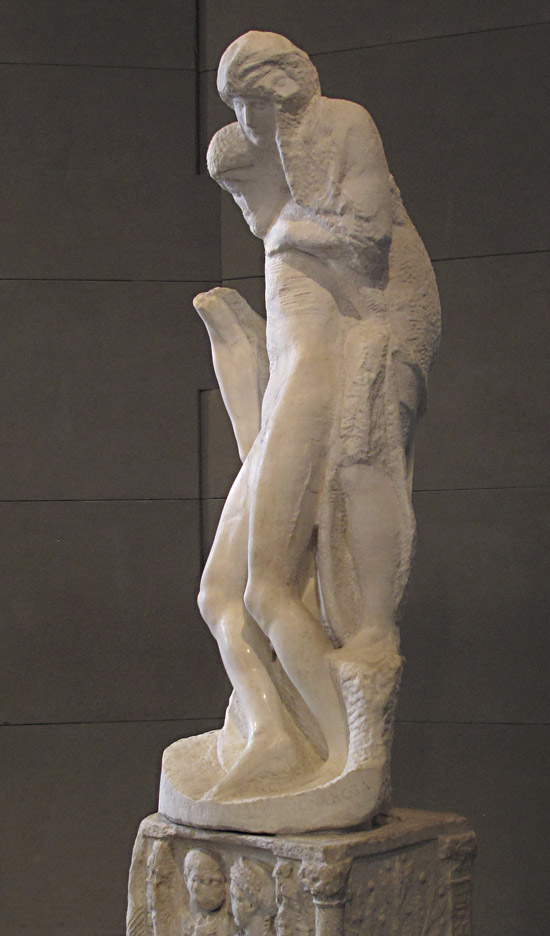

Leonardo da Vinci also left his mark in the city of Milano. He lived here for roughly 20 years and followed not only artistic pursuits, but also military and civil engineering efforts. (He designed water-flow “locks” on the Naviglio Pavese canal along which I ride my bike so frequently.) His world-renowned “Last Supper” is here in Milano at the monastery of Santa Maria della Grazie. Viewing tickets are sold months in advance, and the large salon hosting the wall mural has an atmosphere very carefully controlled to preserve what’s left of the dry fresco.
At the Castello, on the other hand, I readily walked in and bought a 3 Euro ticket to view the whole museum complex. I proceeded past stone remnants from centuries past.
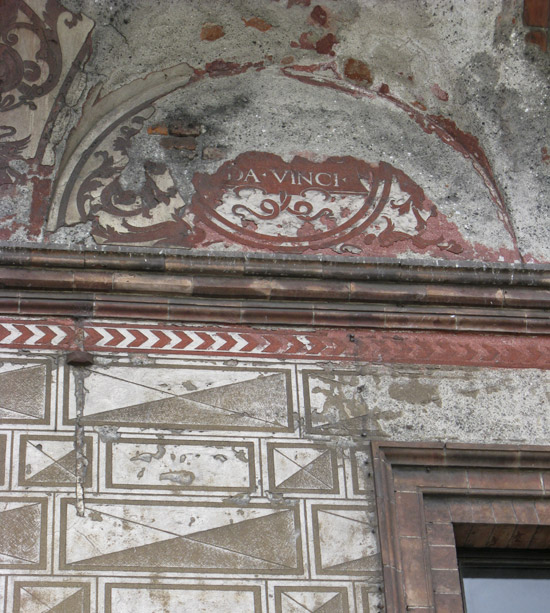
“Court of the Dukes Museum of Art”
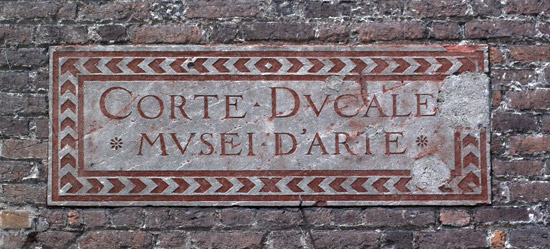
(This letter “P” is for my sister, by special request.)
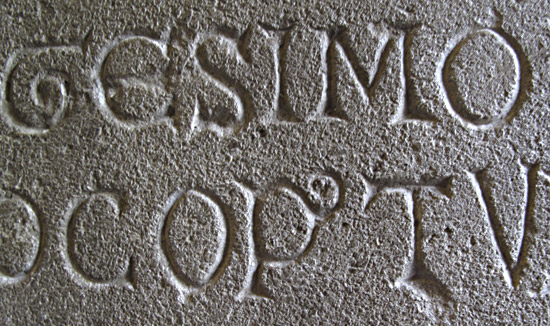
And I was amused by this type correction. (Ooops.)

I walked into grand rooms with elaborately painted ceilings and draped with tapestries, this one of St. Ambrogio, the patron saint of Milano.
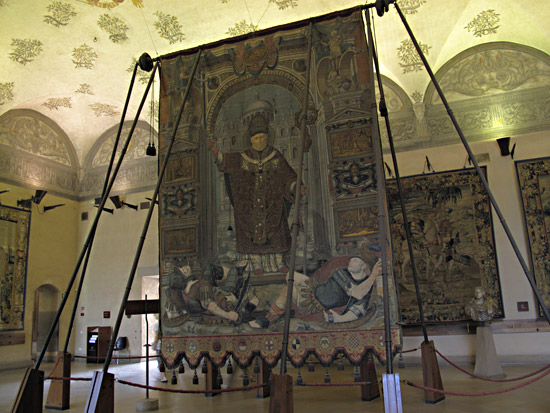
And then I walked into an entirely unexpected and very dark room. The “Sala delle Asse” was painted by Leonardo c. 1498 across the full expanse of its ceiling and down onto its walls. Quite unlike the iconic “Last Supper”, this canopy of foliage, trunks, stone and scrollwork creates a tangle of visual detail. At first glance it looks like a mess, as if the whole surface had been consumed by black mold over the years, with a few, still-vivid blue shields positioned at quarters.
The ceiling has an equally tangled history of “restorations”, including a complete whitewash covering, subsequent cleaning and color “enhancements”. The room was restored again in 1954, undoing the heavy-handed treatments it had suffered in centuries past.
It was a hard place to photograph, but you can find more images here. (Looking at some of them, I can’t believe we were looking at the same ceiling!)
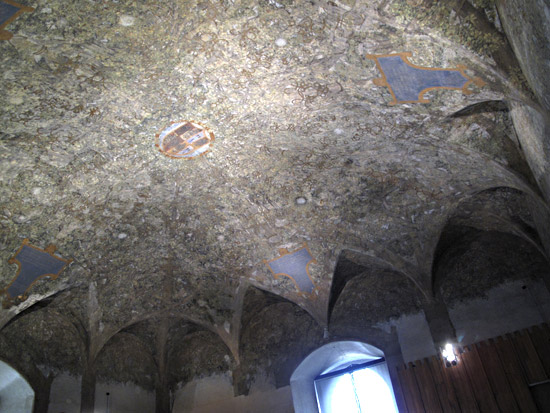
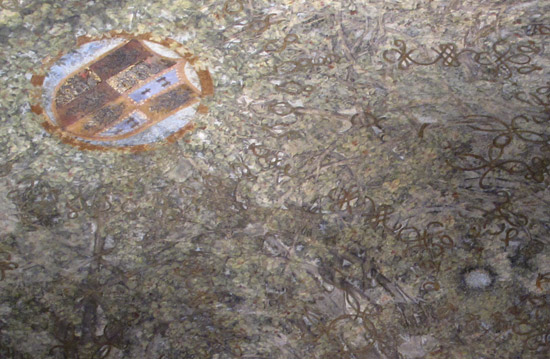
The Castello has a grand inner courtyard, with an interior moat home to dozens of cats! The museum sections are housed in the building ring around the courtyard.
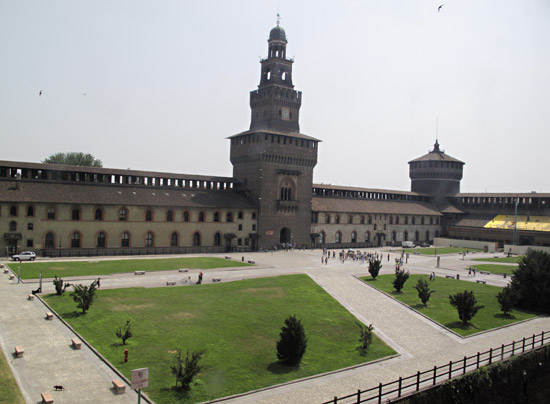
The Castello Sforzesco is a hub and a landmark for the city, stalwart and visible from a distance. One can make the short, straight walk from Castello to Duomo.
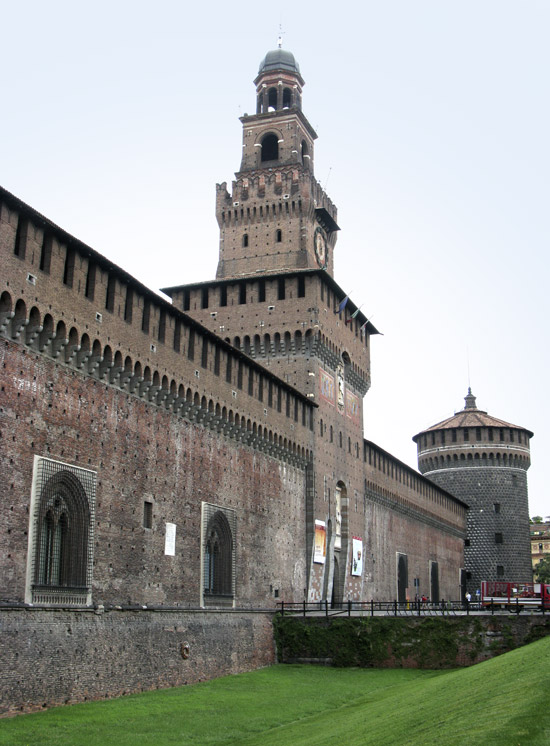
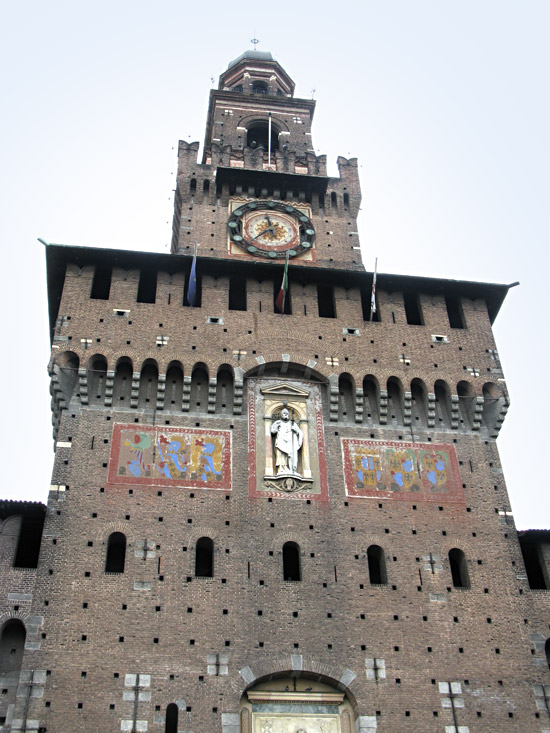
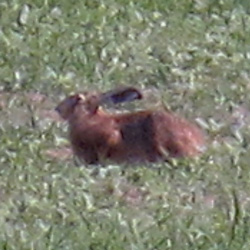
by Maureen | Jul 9, 2010 | Canals, Discoveries, Featured Articles, Journal, Photo of the Day, Photos
Since it’s been so toasty here lately, I took my bike ride in the morning today, heading out from the house just after 8:00. When I got to the field that had been full of rapeseed and red poppies a while back, I saw FOUR jackrabbits out in the field! This time I stopped. I maxed out the zoom on my little camera and got a couple of images for all those that were disappointed earlier not to see the “jackrabbit kangaroos“. It’s hard to gauge their size in this photo, but these bunnies are BIG!
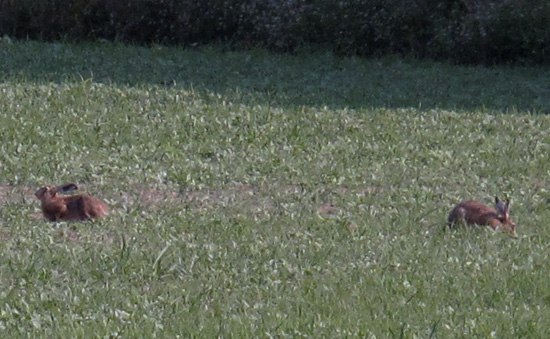
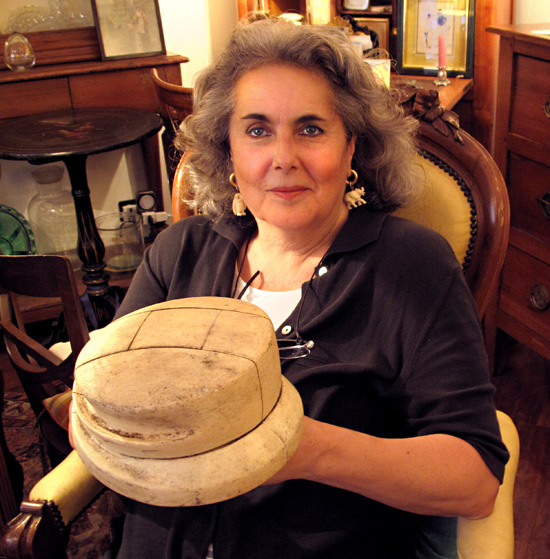
by Maureen | Jul 6, 2010 | Featured Articles, Genova, Incredible Locations, Journal, People, Photo of the Day, Photos
It all started with hat forms on Milan’s Grand Canal.

Five weeks ago I went to the Mercatone Antiquariato – Antique Market – along the Naviglio Grande and saw hat bases made of coarse fabric. They are from the Bovone sisters that were making hats in the 1930s. The hats have asymetrical, sumptuous curves and show the “hand” of their makers through stitches and markings.

The hat bases harkened to the beautifully-sculpted wooden hat forms I did NOT buy in Florence in March but still thought about. I bought 3, chatted a bit with the woman selling them and asked for her business card.
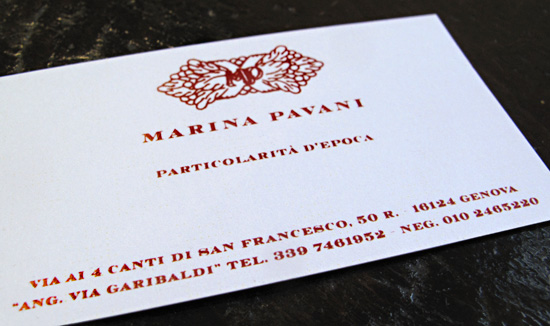
A week ago, back at the antique market, the woman was there again and she had wooden forms this time! I considered them all and picked one to bring home. The seller, Marina Pavina, and I introduced ourselves and talked some more. She was insistent: “you should come to Genova!” I had already planned to go through Genova, her home town, on my way to San Remo a week later, so we agreed to meet there.
At the end of the train ride from Milano, I stepped out of the station into a 90-degree day and was met by Marina and her husband, Claudio. They took me on a city overview driving tour of Genova, port city and home of Cristoforo Colombo. There was much that reminded me of Seattle: the waterside location, the surrounding ring of hills, the elevated viaduct, the busy international port. Yet it is all tighter and closer in.
Claudio stopped long enough for Marina and me to get out and see the front of Cristorforo’s house, as well as the adjacent towered city entry.
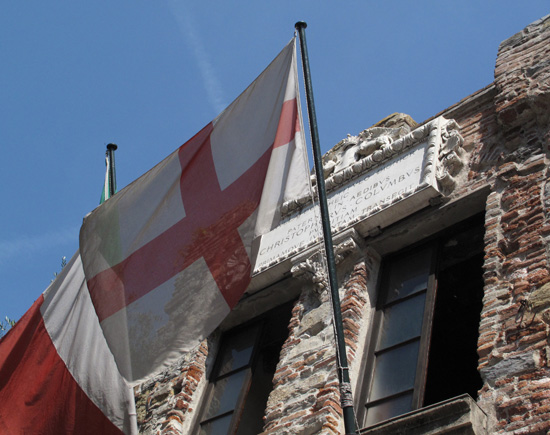
Two towers create an arched entry gate into Genova’s Molo neighborhood.
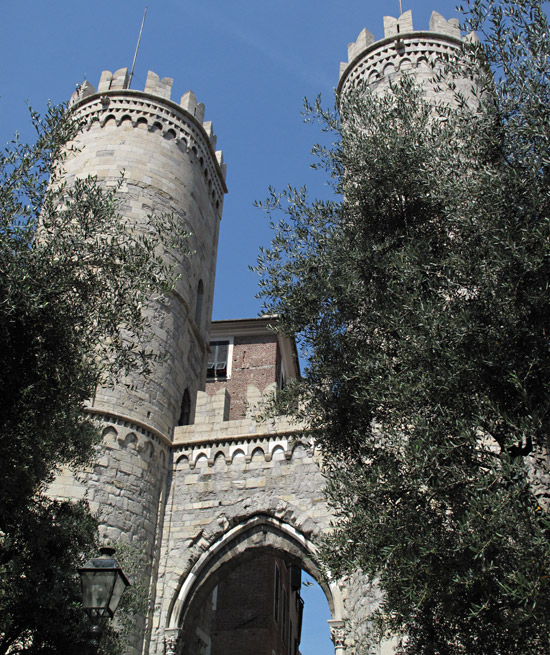
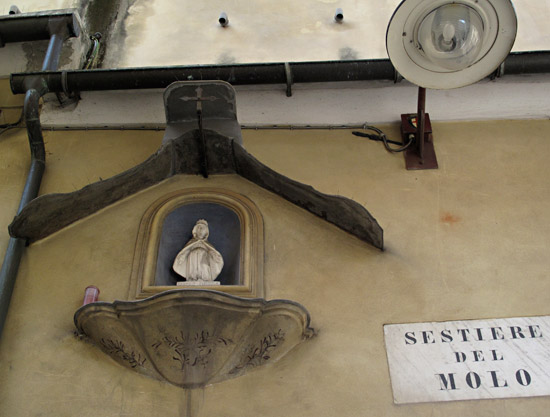
This madonna and two plaques are mounted underneath the arch. The top plaque is from 1865. (I’ve recently brushed up on reading roman numerals. It comes in handy here in Italy.) Madonnas and other religious niches like this are found all over Italy, reflecting the high number of Catholics in the country.
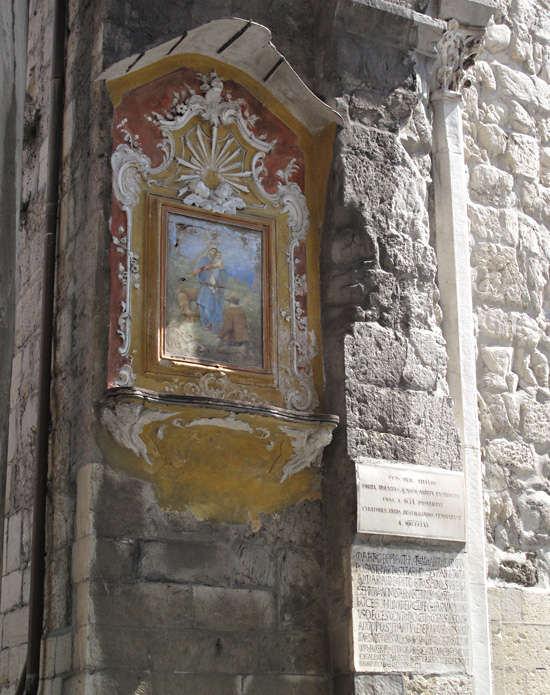
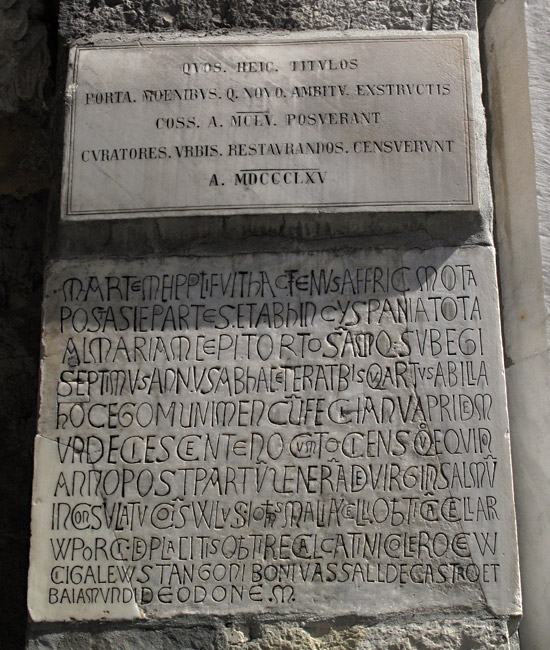
I’ve never seen such a concentration of scooters than in Genova, although I was told later that San Remo has more scooters per capita. In some places in the city, there are so many scooters parked along both sides of the street that there is just enough space for one car to pass between them, lane lines having no meaning.
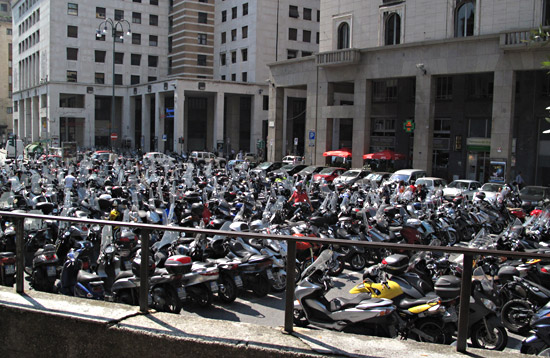
After our driving tour, we parked the car and took a stroll along the beautiful and historic Via Garibaldi. Genova has elaborately frescoed and decorated buildings like I’ve never seen (nor will) in Seattle. Just envision this building without its fresco painting!
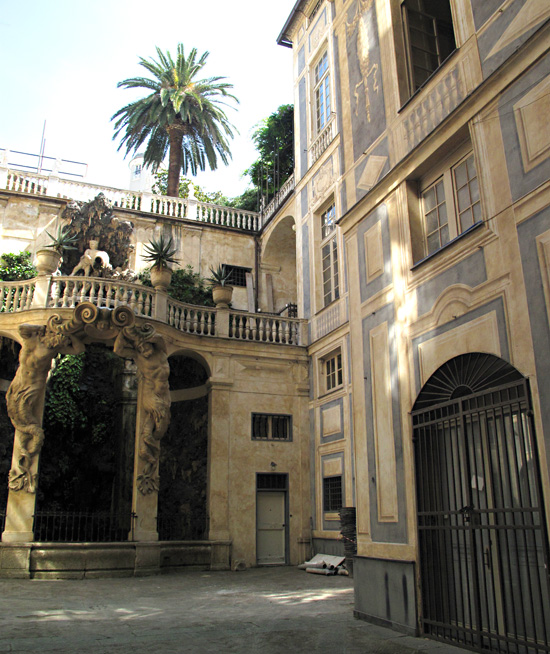
This is an interior foyer just off the street.
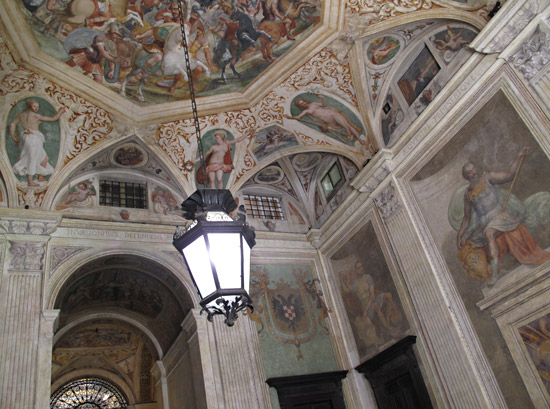
This ceiling reminds me of Wedgwood pottery.
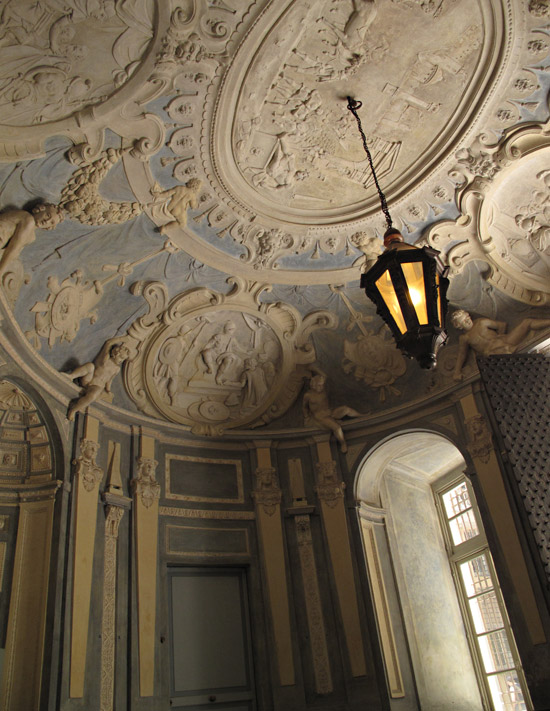
Our next stop was Marina’s antique shop, “Marina Pavani Particolaritá D’Epoca”, just off Via Garibaldi near the museums.
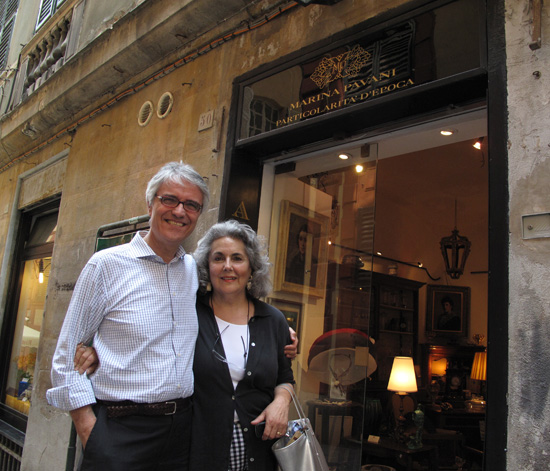
Marina offers art pieces, furnishings and decorative objets d’art covering a broad time period. Whether a person is looking for a large, prominent piece, or a small, visual detail, Marina’s collection piques the curiosity. She also does custom searches and display work.
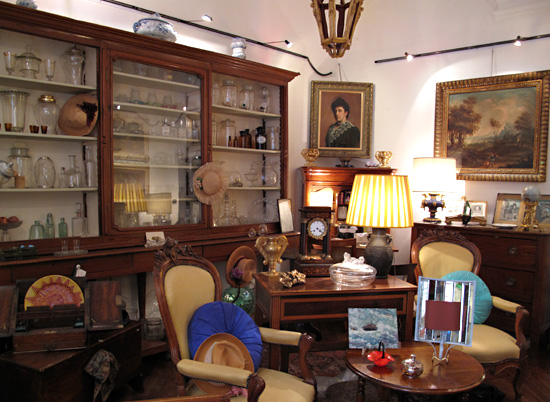
.
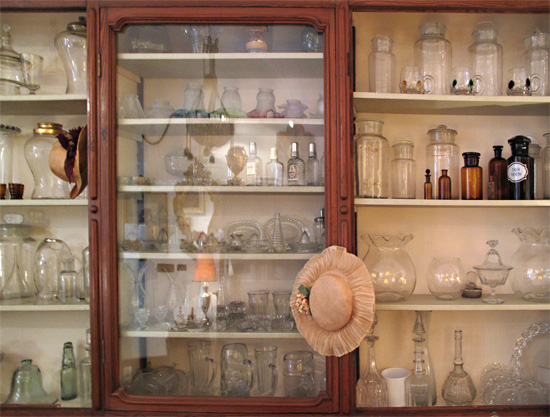
.
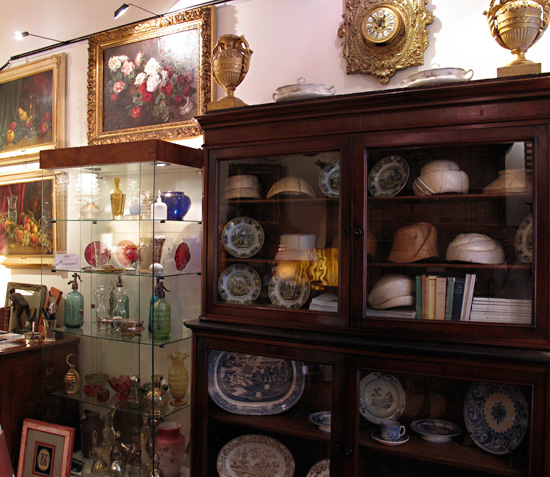
Here’s a sampling of some of the hat forms that caught my eye in the first place.
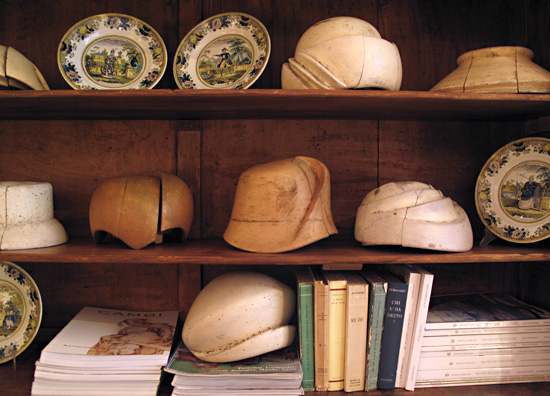
The hat forms are constructed of 5 wooden pieces joined with large dovetail joints, then sculpted and painted. Damp hat fabric, likely felt, is draped over the form, pressed and pinned into the depressions and left to dry. When removed, the fabric will have taken the shape of the hat form.
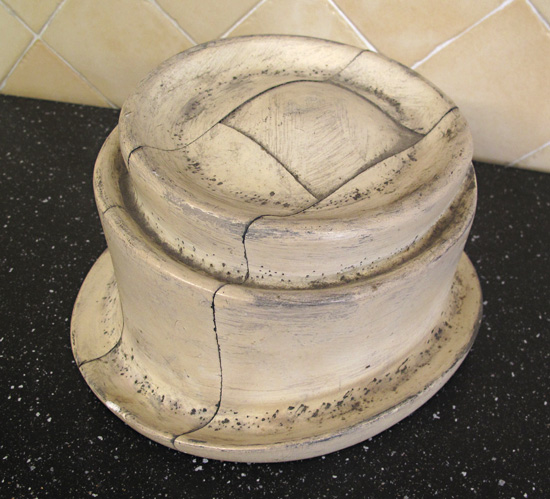
I bought this second one while in Marina’s shop in Genova. I like all the patina and pin holes as much as the lovely curves of the forms themselves.
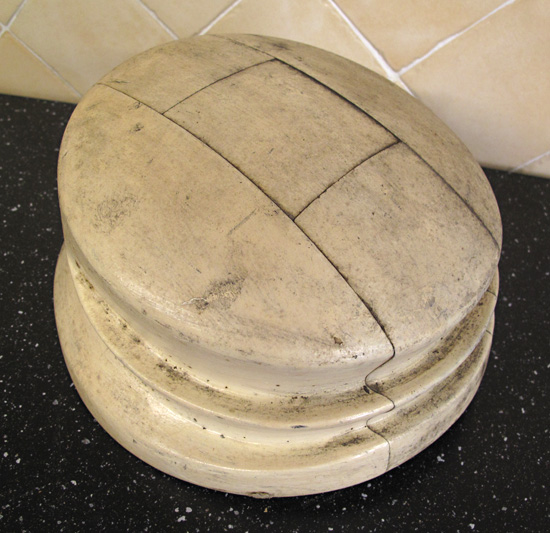
While looking at the underside, the dovetail joints and form numbers are visible.
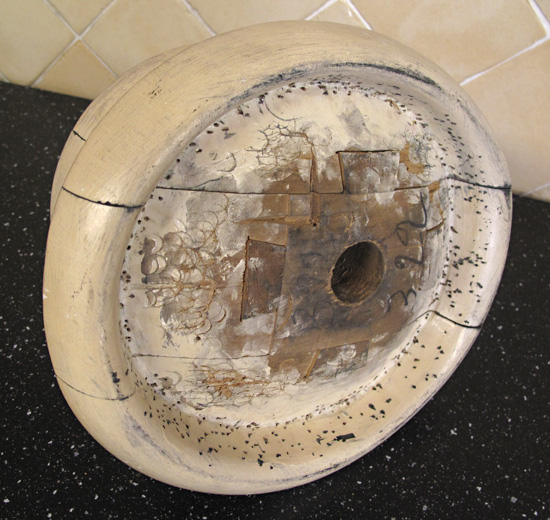
After browsing the antique shop, Marina and Claudio treated me to lunch at a cafe nearby.
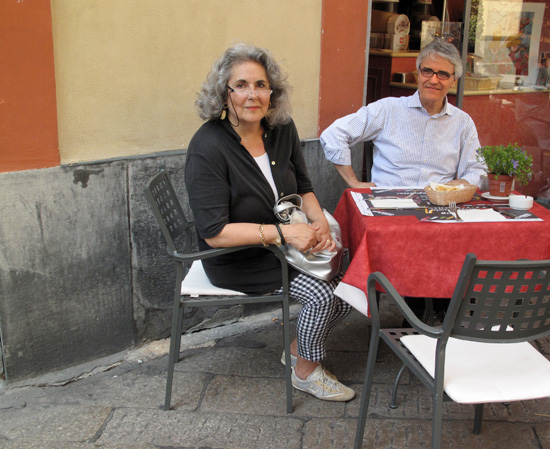
.
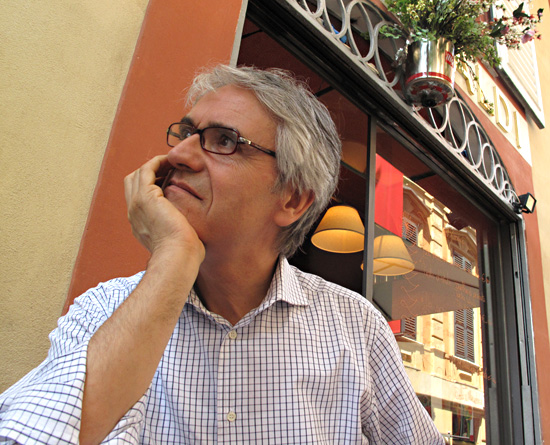
We rushed through our lunch and finished just in time for them to drop me off at the station and give each other quick goodbyes. I then waited on the platform for a half-hour-late train on a sweating-hot day.
What’s most remarkable to me, again, is the kindness of strangers that I have been encountering. I don’t know Marina and Claudio, and yet they hosted me warmly in their home town, and we chatted like long-time friends.
If you find yourself in Genova, step into Marina’s shop. See what catches your eye and enjoy a pleasant conversation.
Marina Pavani Particolaritá D’Epoca
Via Ai 4 Canti di San Francesco, 50 R. 16124 Genova, Italia
(Angolo Via Garibaldi)
Tel: 339-7461952
